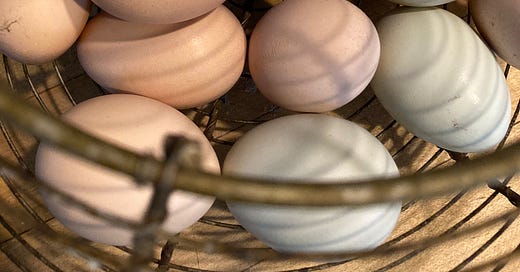#3 an Ode to Eggs
Mainely Maine with Tips from the Mediterranean (and a Lusciously Lemony Recipe)
It’s the simplest, most basic of foods, the one cooks turn to when there’s nothing to eat in the house—because there’s almost always an egg or two or three in the pantry, ready to be scrambled into a quick supper, or tossed with hot pasta to make a rich carbonara, or poached in chicken stock to turn that unassuming broth into chicken soup. “Put an egg…
Keep reading with a 7-day free trial
Subscribe to On the Kitchen Porch to keep reading this post and get 7 days of free access to the full post archives.




